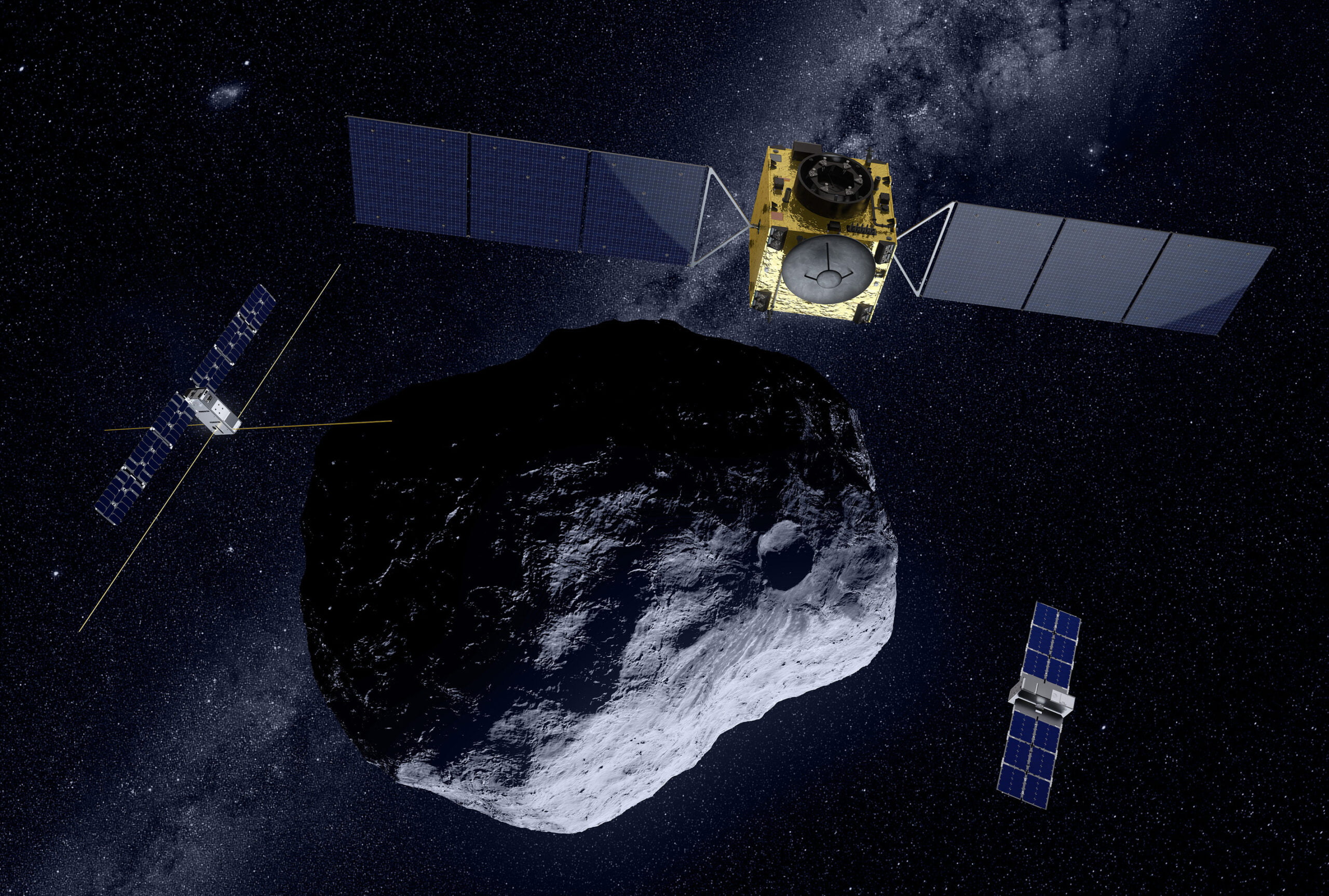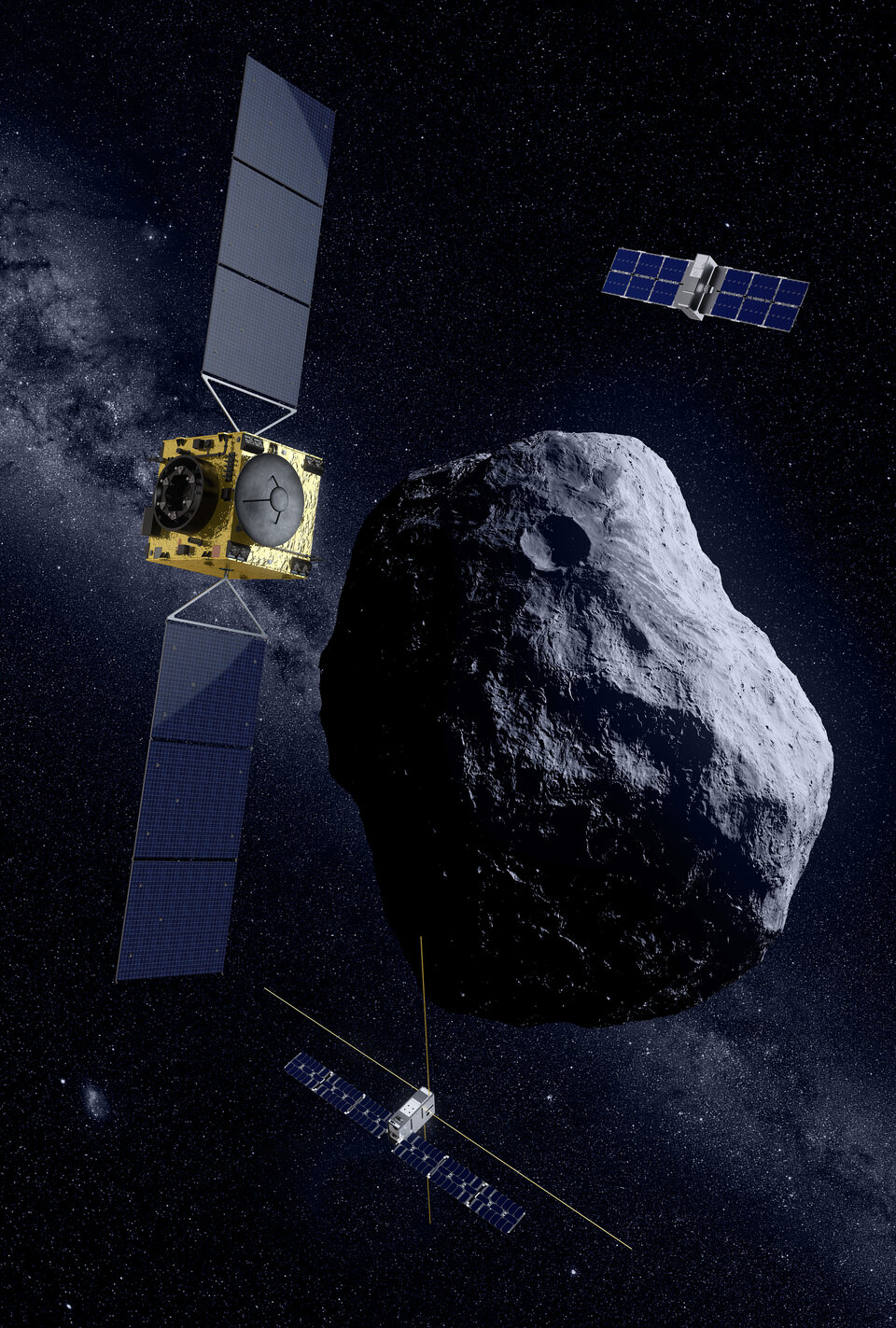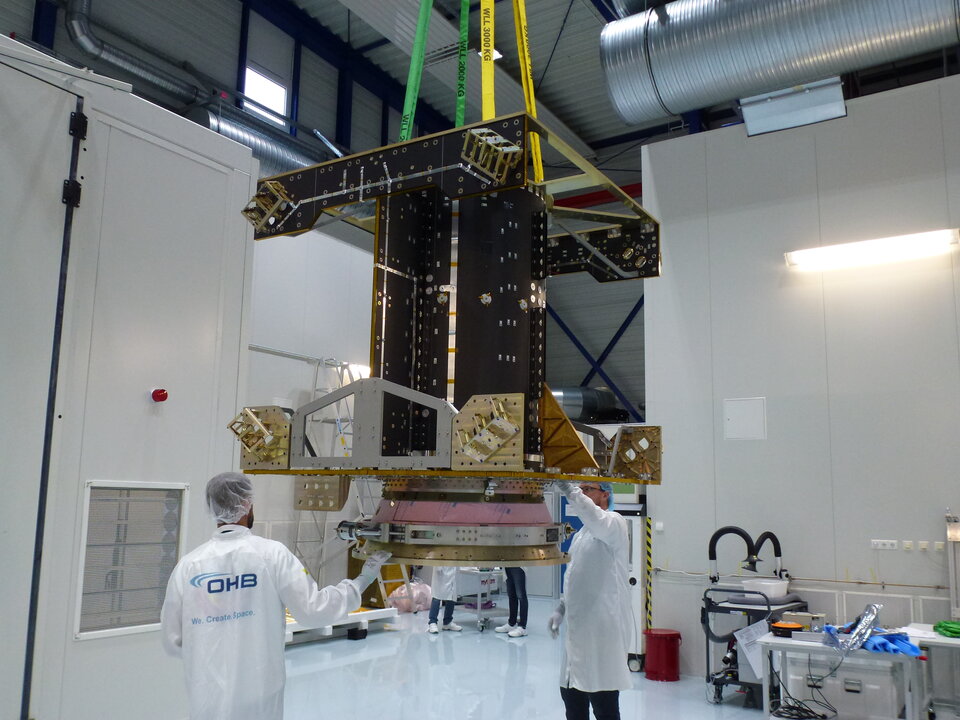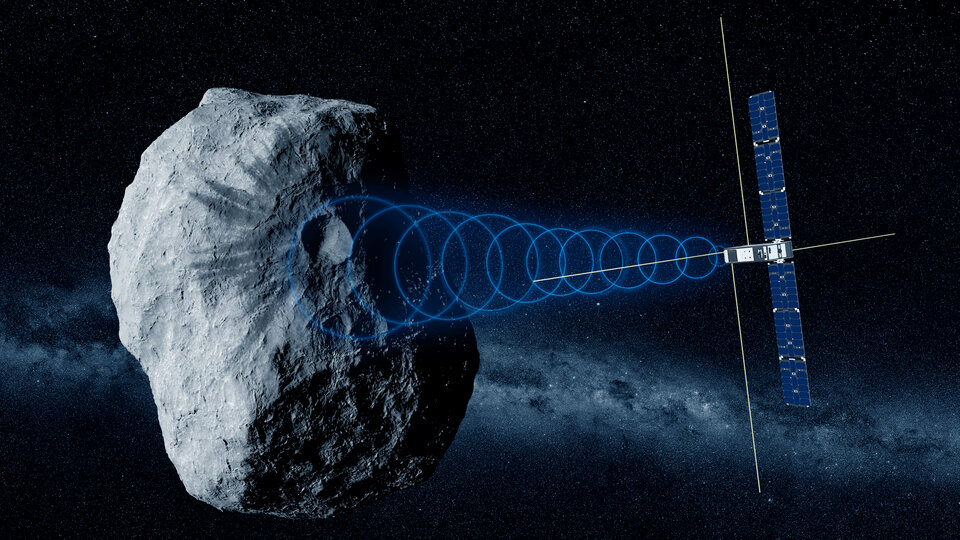This month NASA’s DART spacecraft will collide with the smaller of the two Didymos asteroids in deep space, attempting to shift its orbit in what will be humankind’s first test of the ‘kinetic impactor’ planetary defence technique. Meanwhile, down on the ground, ESA’s follow-on mission to Didymos has reached its own crucial milestone.
The main 780-m diameter Didymos asteroid is orbited by the 160-m diameter Dimorphos ‘moonlet’. DART, NASA’s Double Asteroid Redirect Test, will impact Dimorphos on 26 September, which should shift its orbital trajectory in a small but measurable way, observable from Earth.
Next comes ESA’s Hera spacecraft, which will fly to Didymos to perform a close-up survey of the aftermath of impact, gathering key information such as the size of DART’s crater, the mass of Dimorphos and its make-up and internal structure. Hera’s extra data will help turn the DART deflection experiment into a well-understood, repeatable technique that might one day be needed for real.
Next comes ESA’s Hera spacecraft, which will fly to Didymos to perform a close-up survey of the aftermath of impact, gathering key information such as the size of DART’s crater, the mass of Dimorphos and its make-up and internal structure. Hera’s extra data will help turn the DART deflection experiment into a well-understood, repeatable technique that might one day be needed for real.
“The Hera team is currently in the midst of our Critical Design Review, which is the last mission’s last major review before launch acceptance,” explains Karim Mellan, Hera’s Assembly, Integration and Test manager.
“At the same time, we are working at such a compressed schedule – with the launch planned for October 2024 – that we are already advancing in construction and integration. The flight model of the Hera spacecraft is fast taking shape at OHB in Bremen, Germany, and at Avio in Colleferro, Italy. Meanwhile functional testing of mission system is ongoing on OHB’s Avionics Test Bench at Bremen.”
The main purpose of the Critical Design Review is to confirm the design readiness of the Hera spacecraft, its instruments and interfaces with other mission segments, such as its launcher, ground infrastructure, and the two miniature ‘CubeSats’ that Hera will deploy upon arrival at the Didymos system.
Undertaken by an expert review board and involving hundreds of documents and data packages, the process covers all aspects of the mission’s readiness to safely perform its set goals in time and on schedule.
The shoebox-sized Milani CubeSat – which will carry out spectral measurements of asteroid dust – and Juventas CubeSat – which will perform the first radar probe of an asteroid – have already passed their Critical Design Reviews, as has the TIRI thermal infrared instrument being supplied to Hera by the Japan Aerospace Exploration Agency, JAXA.
“Successful completion of the CDR brings us a step nearer to space,” adds Karim. “At the same time the Hera team will be watching closely as DART approaches Dimorphos. Its impact is a moment that we have been looking forward to for many years – our two missions were originally conceived together. And the initial glimpses of Dimorphos that DART sends back as it homes in on its target will be the very first time we get to see a place that all of us in the Hera team have been imagining for a very long time.”











